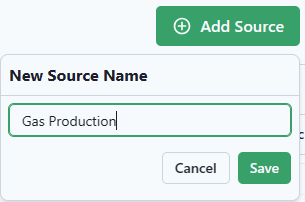- Weatherford Knowledge Base
- Customer Training
- Power User Training Exercise
-
Getting Started
-
Customer Training
-
Customer Success
-
Updates
-
Production Optimization
-
Artificial Lift Optimization
-
Completion Optimization
-
Environmental, Social & Governance
-
Development, Acquisition & Divestitures
-
Enhanced Oil Recovery
-
Admin
-
P#
- Getting Started with P#
- Data Cleansing
- String Functions
- Scenario Functions
- Regression Functions
- Placeholder Functions
- Mathematical Functions
- Logic Functions
- Entities Function
- Moving Window Functions
- Time and Date Functions
- Statistical Functions
- Economic Functions
- Data Handling
- Additional Functions
- Directional Functions
- Machine Learning Functions
- DCA Functions
- Neighborhood Functions
-
Packages
Lesson 4: Create a Numeric Time-Dependent Source
Connecting to production data.
Video
Training Guide
The Production data is produced gas. This data is considered to be Numeric and Time Dependent and requires it to be mapped separately from the Static data.
- Add Source by clicking on the green plus.
![]()
- Select the Connection as the Excel file.

- Select the following Data Settings.
Data Type: Numeric
Import Type: Time
Sheets: Specify Sheet Name
Sheet Name: Produced Gas
Stacking: Entities

- Preview Data.

- Ensure that the Entity Column matches the unique identifier from the data. The Step Column is for the Time data.

- Select Mappings from the top of the page.

- Extract the data from the Connection.
![]()
- Since the entities have already been mapped in the previous lesson, select Automatic and Automatic again. This will map the entities to exact matches in the workspace.

- Select Signals.

- Extract the data.
![]()
- Select Automatic and it will map to the Produced Gas per Time Increment.

- Add the Source.

- Save as "Gas Production."

- Click on the ellipse to Make public.

